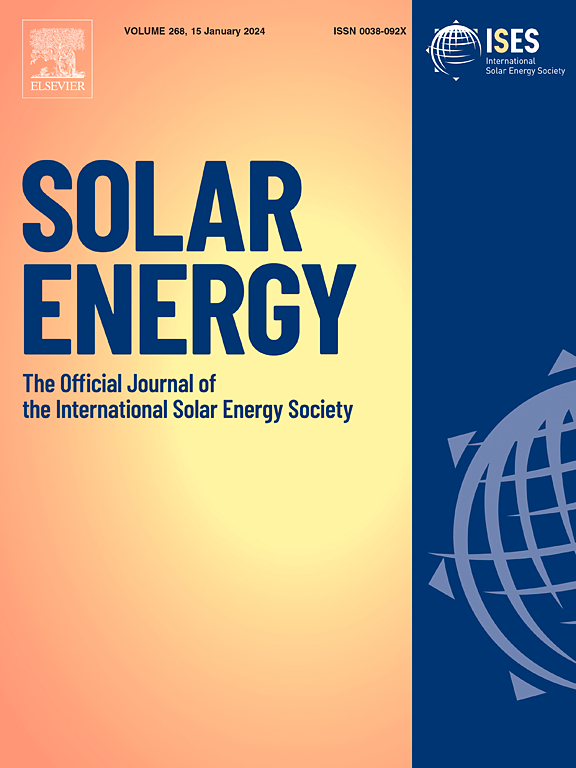光伏组件分层行为的数值模拟
IF 6
2区 工程技术
Q2 ENERGY & FUELS
引用次数: 0
摘要
本文采用数值模拟的方法研究了光伏组件的分层行为。这项工作首次提出了一个代表全尺寸光伏组件的数值模型,使用内聚区元素来模拟分层过程。不同材料的热膨胀失配可以解释光伏组件的分层行为。该模型模拟了制造过程和五个热循环(PV行业中使用的加速老化试验),以评估材料的热膨胀行为如何影响分层风险。此外,还首次研究了湿老化和紫外线老化对脱层倾向的影响。该模型确定了光伏组件中的优先分层位点,并与实验观察结果相一致。此外,还研究和讨论了边界条件对模型预测的影响。需要更好地估计粘着能被强调,因为是缺乏实验模式II粘着能数据在文献中。该数值模型显示了封装剂/玻璃界面处的应力分布。揭示了电池尺寸对封装剂/玻璃界面处达到的应力水平的影响。胞间区域吸收了封装剂的变形,减少了界面应力,降低了分层的风险。这个仿真工具可以模拟任何PV模块,只要材料属性是已知的。这项工作可用于研究新的光伏组件尺寸和新材料,以减少分层的风险。本文章由计算机程序翻译,如有差异,请以英文原文为准。
Numerical simulation of the delamination behavior of photovoltaic modules
In this work, the delamination behavior of photovoltaic (PV) modules is investigated by numerical simulation. This work is the first to propose a numerical model representing a full-size PV module using cohesive zone elements to simulate the delamination process. The thermal expansion mismatch of the different materials can explain the delamination behavior of PV modules. The model simulates the manufacturing process and five thermal cycles - an accelerated aging test used in the PV industry - to assess how the thermal expansion behavior of materials influences the risk of delamination. Furthermore, the impact of humid aging and UV aging on the delamination tendency are investigated for the first time. The model identifies the preferential delamination sites in a PV module, which align with experimental observations. Additionally, the influence of boundary conditions on the model’s predictions is examined and discussed. The need for better estimation of adhesion energy is highlighted, as is the lack of experimental Mode II adhesion energy data in the literature.
This numerical model displays the stress distribution at the encapsulant/glass interface. The influence of the cell size on the stress level reached at the encapsulant/glass interface is also revealed. The inter-cell region absorbs deformation in the encapsulant, reducing interface stress and mitigating the risk of delamination.
This simulation tool can model any PV module, provided the material properties are known. This work can be used to investigate new PV module dimensions and new materials to reduce the risk of delamination.
求助全文
通过发布文献求助,成功后即可免费获取论文全文。
去求助
来源期刊

Solar Energy
工程技术-能源与燃料
CiteScore
13.90
自引率
9.00%
发文量
0
审稿时长
47 days
期刊介绍:
Solar Energy welcomes manuscripts presenting information not previously published in journals on any aspect of solar energy research, development, application, measurement or policy. The term "solar energy" in this context includes the indirect uses such as wind energy and biomass
 求助内容:
求助内容: 应助结果提醒方式:
应助结果提醒方式:


